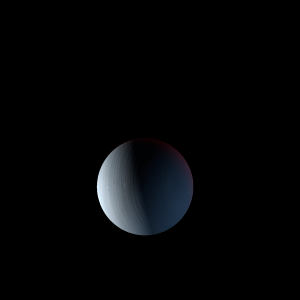|
|
Space Astro
|
Info for exoplanet "Yingk"
| Scientific (actual) data |
|---|
| Planet | HD 220773 b |
| Planet status | Confirmed |
| Mass sini | 1.45 |
| Orbital period | 3724.7 |
| Semi major axis | 4.94 |
| Orbit eccentricity | 0.51 |
| Angular distance | 0.100816 |
| Discovered | 2012 |
| Updated | 2012-02-03 |
| Omega | 226 |
| Tperi | 2453870 |
| Publication | Published in a refereed paper |
| Detection type | Radial Velocity |
| Star name | HD 220773 |
| Right ascension | 351.61° |
| Declination | 8.64° |
| Mag v | 7.09 |
| Star distance | 49 |
| Star metallicity | 0.09 |
| Star mass | 1.16 |
| Star sp type | F9 |
| Star age | 4.4 |
| Star temperature | 5940 |
| Wikipedia article | HD 220773 b |
Back
| |
| Fictional info (?) |
|---|
| Suggested name | Yingk |
| Planet type | Cold planet |
| Yingk is the largest and innermost planet in its solar system.
Yingk is similar in composition to Answan, and both have different bulk chemical composition from that of the larger cold planets. It is the coldest planetary atmosphere in its solar system, with a minimum temperature of 53°K (-220°C), and has a complex, layered cloud structure with carbon dioxide thought to make up the lowest clouds, and hydrogen chloride the uppermost layer of clouds. The planet is named after the deity Yingk, the goddess of prosperity.
The outer atmosphere is visibly segregated into several bands at different latitudes, resulting in turbulence and storms along their interacting boundaries. |
| Atmosphere | Hydrogen chloride | 39% |
| Carbon dioxide | 33% |
| Ozone | 15% |
| Helium | 12% |
| 2H2O | 0% |
| Atmospheric pressure | 80 bar |
 |
| No known satellites |
| Google search for Yingk |
|
Website by Joachim Michaelis
|
|
|
|